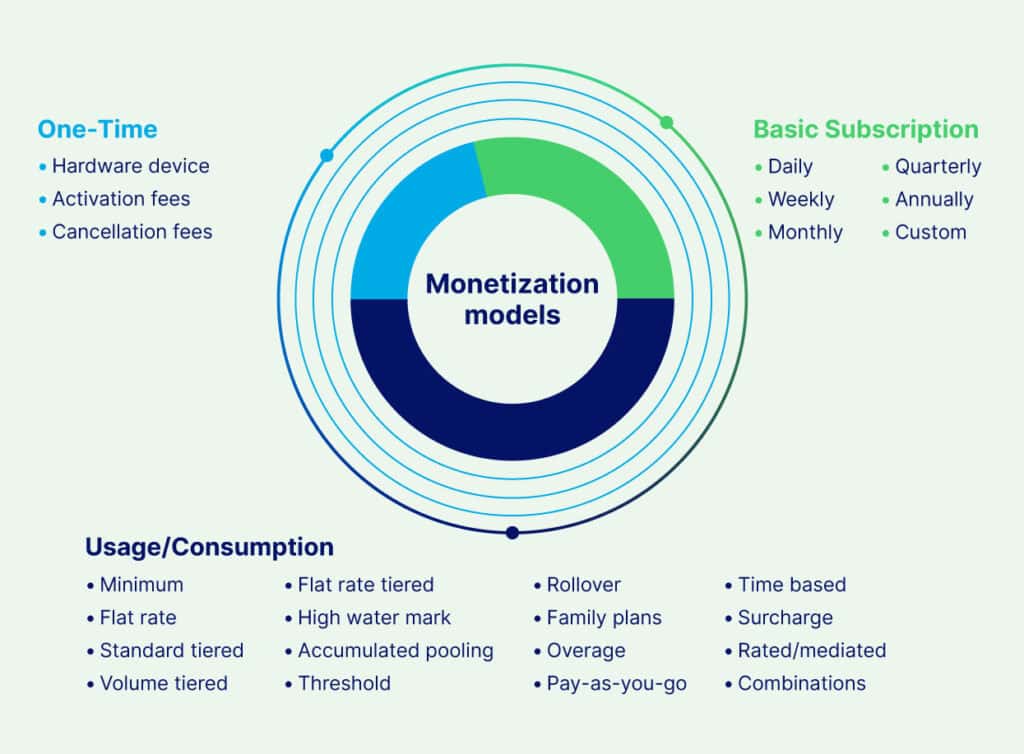Subscription revenue is a top priority for 80% of publishers, with 68% expecting to see at least some growth in 2023. While the focus of the last few years has been digital transformation and rolling out subscriptions to buoy the weakening of print, this year publishers are prioritizing the retention of existing customers.
In an era of economic uncertainty, news avoidance, and subscription fatigue, publishers looking for advantages in not just retaining, but growing subscription revenue are turning to automated billing as an accelerator. In doing so, they avail themselves of a wide range of monetization options to enhance subscriber value and provide IT, commercial, and finance roles with the flexible tools and visibility necessary to create and quickly roll out product offers to meet customer demand.
Automated billing increases subscriber value and satisfaction
The changing subscription landscape and the need for new offerings requires a billing platform that can handle the complexity of different pricing schemas for a variety of subscription models. This includes consumption-based models, bundled offerings, print distribution, and one-time product sales, among others. Meeting the ever-changing needs of your subscribers means that the ability to automate invoicing with real-time data tracking and accuracy is no longer a nice-to-have, but a must-have capability.
For consumers, the economic benefits of subscriptions – smaller, monthly payments versus large, one-off costs – are driving the shift from ownership to access. However, they want more control over their expenses, the flexibility to only pay for what they use, and the ability to choose the product mix they value, without committing to bells and whistles they won’t use.
Publishers that offer choice and flexibility stand to win more subscription revenue amid constantly changing economic conditions and reader preferences. Those that provide the ability for subscribers to modify their subscriptions, without a blip in billing, will also see reduced levels of churn.
Let’s say you have a customer who wants to pay for her news habit on a consumption basis, but also wants access to recipes, a premium podcast special event—she has a discount code—and to have the Sunday print paper delivered to her home. For many billing platforms, that’s four invoices—not to mention the complexity of real-time consumption data monitoring.
A billing platform that manages access to digital content and print subscriptions, and provides accurate automated billing for all your products, bundles, and consumption offers pays dividends in customer satisfaction via the instant gratification of self-service—whether on desktop or mobile.
But the value of automated billing is not just for your customers…
Publishers also gain with automated billing
With constant change being the norm, the ability to provide IT, commercial, and finance roles with the tools to help them understand customers, streamline the creation of new product offers, reduce friction to increase cash flow, and do it all within one unified environment, makes sustainable growth possible.
New monetization models let customers decide which media they consume, based on the content format, type and topic, and how they consume it, whether it be a one-time purchase, or on a simple subscription or consumption basis (see diagram below). An automated billing platform with a rules engine that supports complex parameters gives publishers the agility to anticipate and easily serve a variety of customer segments.

Consider the value an automated billing platform brings to roles in IT, product/commercial, and finance.
IT:
- Easily manage billing at scale to support large volumes of transactions and spikes in orders for seasonal offers or special events.
- Simplify compliance with GDPR and PCI regulations.
- Ensure the security of sensitive financial data and reduce the risk of fraud.
- Reduce resource needs through real-time communication between your billing platform, ERP system and financial planning tools.
- One unified environment for distribution, billing, and invoicing for both print and digital offers—for one publication or many.
- Integrate seamlessly with your existing solutions to generate a unified view of the customer.
Product/Commercial:
- Collect and analyze massive volumes of customer data and create a range of subscription/monetization models.
- Accelerate the introduction of new content offers and bundles, smoothly augmenting them to existing customer accounts without generating billing errors.
- Experiment with new monetization models, including combinations, to capitalize on trends.
- Create lower entry points to attract new customers. Offer timed discount offers that automatically transition to full price upon expiration of the trial period.
- Reduce churn and preserve relationships for later upsell by allowing customers to downgrade—rather than cancel—as personal economics and preferences shift.
- Unlock new monetization options by gaining insight into how subscribers use different offerings.
Finance:
- Manage a higher volume of billing activities – with more accuracy and fewer errors—without increasing headcount, removing friction from the customer experience.
- Increase customer satisfaction through reliable and timely billing, as well as the ability to provide just one invoice, regardless of the subscription offerings customers purchase.
- Ability to track customer usage according to the metrics you choose.
- Automated reminders for late billing, and flags indicating potential churn.
- Improve cash flow with on-time invoicing, and make it easy for customers to verify their charges, improving willingness to pay faster, without inquiry.
- Detailed data and reports on billing and payment history allow better revenue tracking, analysis, and forecasting.
Adaptability provides an upside for publishers in transition
Everything as a Service (XaaS) is a growing trend across many industries, not just news and media publishing. Research by Ernst & Young has found that 9% of media providers already attribute more than 60% of their revenue to subscriptions, and 59% are collecting between 21% and 60% of their revenues from XaaS offers.
Automated billing backed by a wide range of monetization options offers diversity in how content is offered up as a service. This allows publishers to focus on creating multiple revenue streams from subscriptions, advertising, platform and content licensing, audio/video offers, and more. The ability to do more with owned content assets means less reliance on secondary revenue streams, giving publishers more control over their revenue growth.
As well as providing increased agility, automated billing also enables a strength of data and reporting that supports a new orientation around the customer. This first-party data gives publishers more visibility than ever before. With these insights, matching content and news offers to customer preferences is simplified and, as third-party cookies are eliminated, you’ll also have more value to offer advertisers, strengthening the predictability of your advertising revenue stream.
As the trends of the past few years evolve, your choice of a recurring revenue platform plays an increasingly central role in the creation of sustainable growth. By prioritizing automated billing, you empower teams across the organization to work together toward your revenue objectives.
Learn more about Aria’s Media and Publishing Suite
